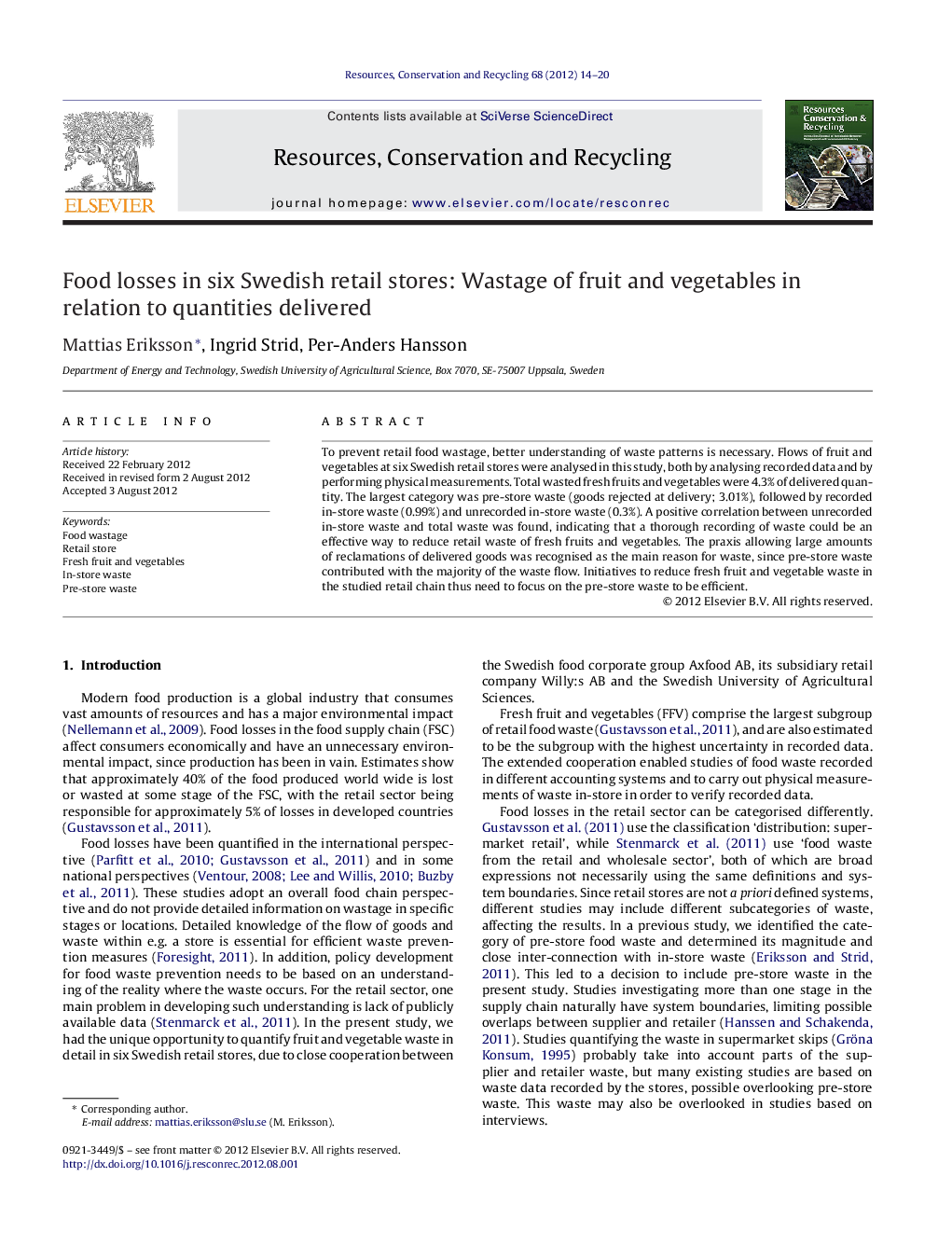| Article ID | Journal | Published Year | Pages | File Type |
|---|---|---|---|---|
| 1063237 | Resources, Conservation and Recycling | 2012 | 7 Pages |
To prevent retail food wastage, better understanding of waste patterns is necessary. Flows of fruit and vegetables at six Swedish retail stores were analysed in this study, both by analysing recorded data and by performing physical measurements. Total wasted fresh fruits and vegetables were 4.3% of delivered quantity. The largest category was pre-store waste (goods rejected at delivery; 3.01%), followed by recorded in-store waste (0.99%) and unrecorded in-store waste (0.3%). A positive correlation between unrecorded in-store waste and total waste was found, indicating that a thorough recording of waste could be an effective way to reduce retail waste of fresh fruits and vegetables. The praxis allowing large amounts of reclamations of delivered goods was recognised as the main reason for waste, since pre-store waste contributed with the majority of the waste flow. Initiatives to reduce fresh fruit and vegetable waste in the studied retail chain thus need to focus on the pre-store waste to be efficient.
► We quantified the wastage of fruits and vegetables in six Swedish low price stores. ► A majority of the wasted fruits and vegetables was due to reclamations. ► The waste was categorised in pre-store waste and in-store waste. ► The unrecorded part of the wastage was categorised as unrecorded in-store waste.
